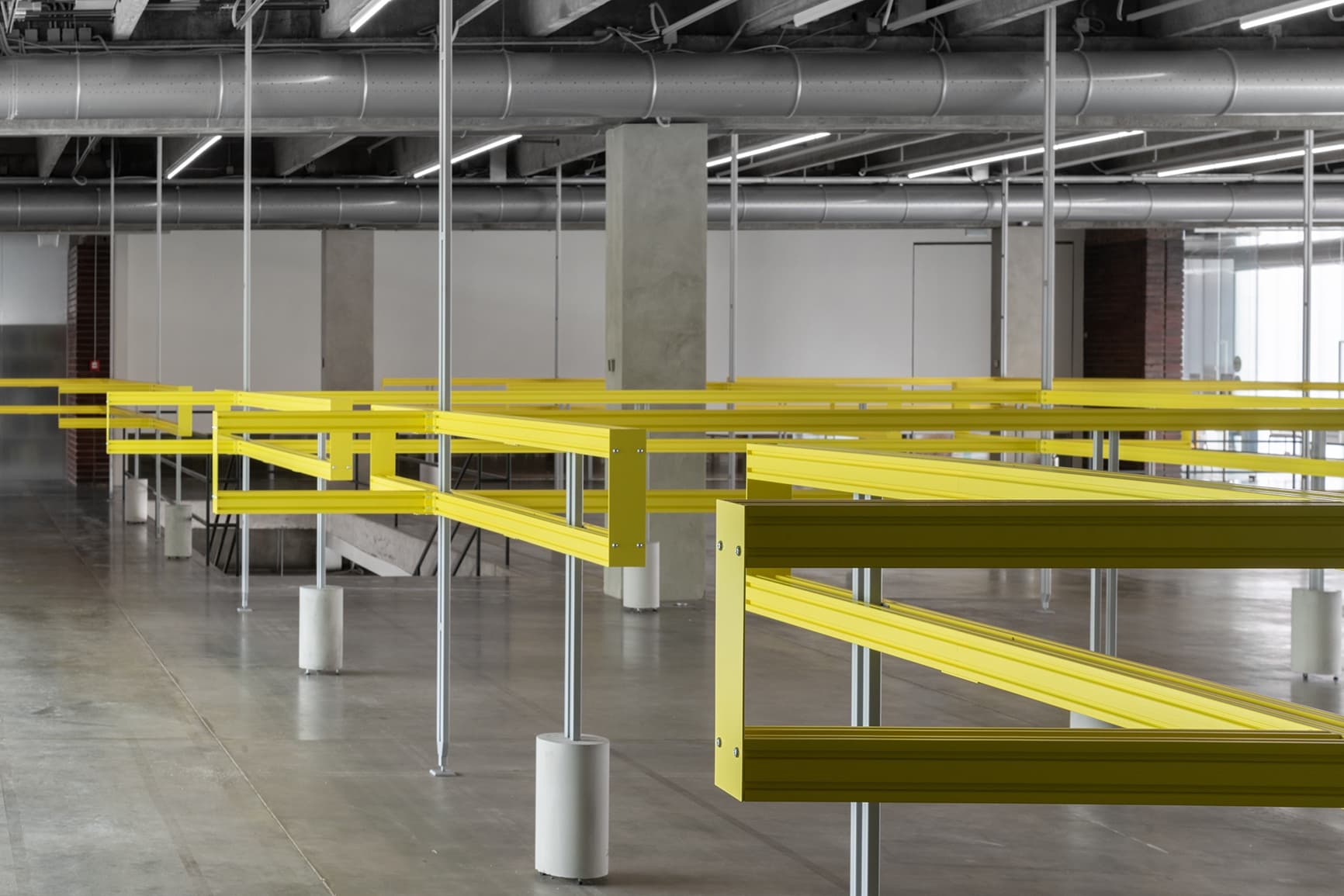Come to Garage!
Erik Bulatov
- Category
- MediumAcrylic on canvas. 2 parts
- Dimensions900 × 575 cm
- Сollection
- Inventory numberМСИГ_ОФ_31/1–31/2_Ж_10/1–10/2
- Acquired from
- Year of acquisition2024
Keywords
About the work
Any conversation about one of the leading Russian artists of the second half of the twentieth century, Erik Bulatov, is often accompanied by a long list of genres which, regardless of their differentiated nature, do not fully reflect the multiplicity and, despite that, the integrity of his creative method. Imagery that is almost photographically accurate, work with the conceptual and plastic components of text, and a subtle irony typical of the sots‑artists‑even this is not the entire arsenal of means that the artist has mastered.
In the early 1970s, Bulatov began to collect railroad posters and danger signs. Laconic images with eye‑catching texts to attract attention formed the basis of the visual language which Bulatov the conceptualist would begin to “speak.” Using the Soviet political poster or contemporary advertising banner as a prototype, the artist remained within the framework of traditional techniques and materials. In Bulatov’s programmatic works, the painterly illusion is covered by an intrusive text that forms a boundary between the space of freedom, true reality, and the conglomeration of visual, ideological, and social clichés within which a person is obliged to live.
In 2015 Bulatov was commissioned by Garage to create the monumental diptych Come To Garage!, which featured in the exhibition marking the opening of the Museum’s new building in Gorky Park. The two large‑format, nine‑meter‑high works were created graphically using a recognisable font and bright, pure colors reminiscent of 1920s advertising posters. However, whereas the avant‑garde experiments of Vladimir Mayakovsky and Alexander Rodchenko were constructed around the flatness of the collage system, combining image and text, Bulatov remained faithful to the spatial organization of the composition. The inscription “COME TO GARAGE!” against the background of a setting sun seems to fall onto the viewer, while the foreshortened name of the Museum on the second panel, in contrast, draws them into the picture space. The endlessly receding space of schematized sky is filled with balloons, which reference the world’s first amusement parachute tower that operated in Gorky Park in the 1930s.



